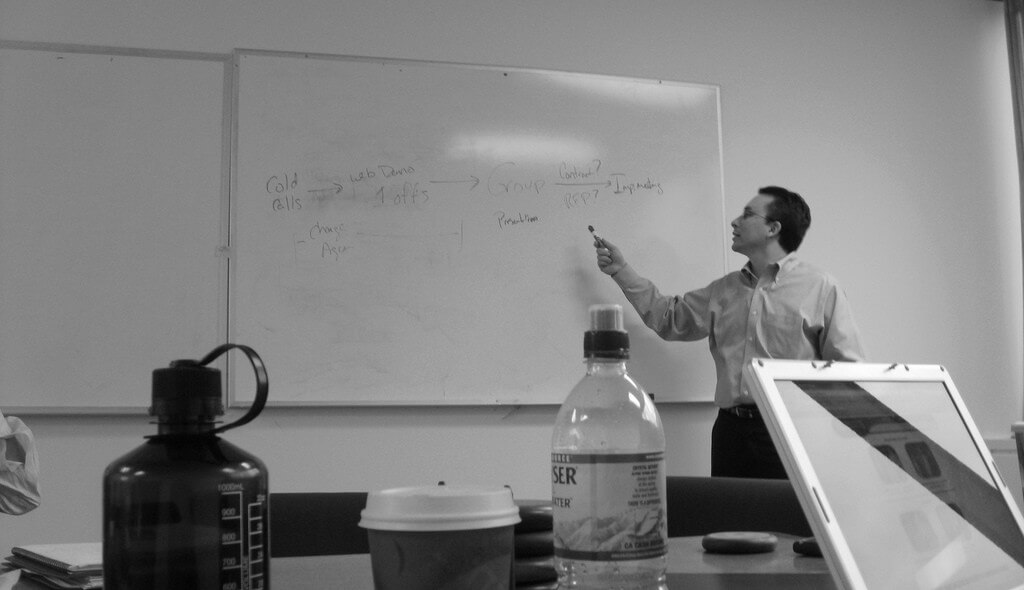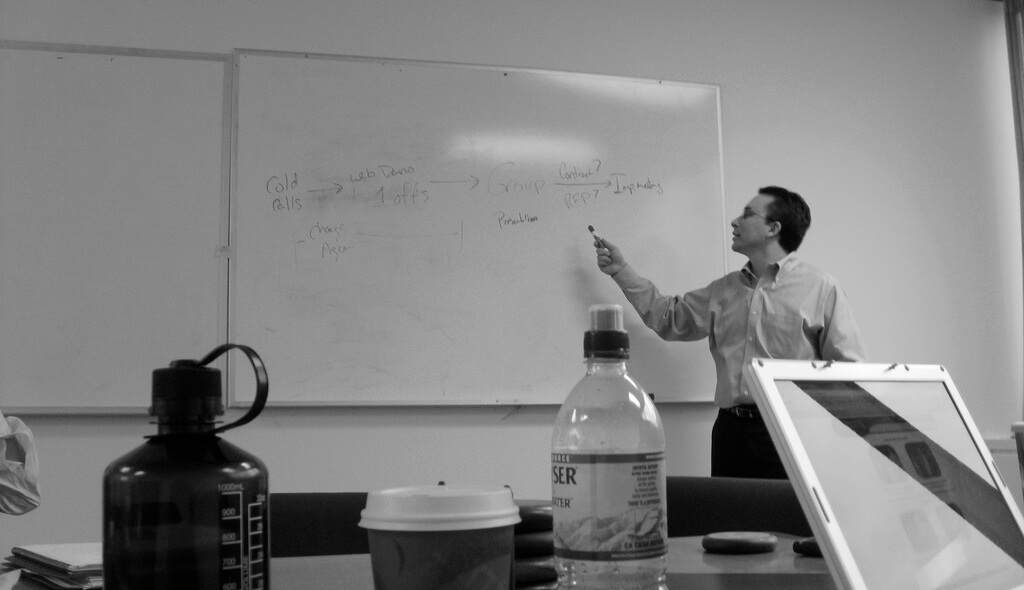Gaining Control of the Sales Funnel
One of the most common representations of the sales process is a funnel. We don’t expect all of the prospects that go into the top of this so-called funnel to turn into sales. In fact, a good sales process has a systematic way to determine early on which prospects will likely to convert into sales and which won’t. I see a lot of companies who believe it’s just a numbers game and try to put as many prospects through the funnel as they can. This process leads to a funnel that’s unpredictable and very inefficient. We want to make sure that we put good, qualified prospects through the funnel to maximize our return.

If you have a marketing process that consistently produces leads, then the stage of the funnel that you have the most control over is the top of the funnel. At each stage that you proceed into the funnel, the customer has more influence over the pace and process. So if you don’t have enough sales, the first place to focus your attention is the top of the funnel. Do more of what has worked in the past to create more leads or work with a marketing partner to develop new marketing tactics that will generate leads. The more targeted the leads are, the higher the proportion will be that produce sales.
Lots of prospects come in the top of the funnel, and some of them are not qualified (can’t pay, don’t have problems that they care enough about, or don’t have problems that fit well for our services) and fall out of the funnel, so a smaller quantity make it into discovery. During discovery, we work to convert the pain they are feeling into a course of action to alleviate it. Sometimes that comes naturally from the discussion, and other times we find that something else is needed or stands in the way. So a smaller number of prospects get proposals that enter discovery, and further a smaller number of customers will buy than get proposals. The percentage that continues on from one step the next is the yield of that step; the percentage that makes it from the top to the bottom is your “closing ratio”.
Once you are consistently creating leads, you need to focus on your yield from each stage of the sales funnel. Too many falling out in qualification? You need more targeted lead generation. Too many falling out in discovery? You need to improve your qualification process, and so on. The sales funnel needs to be improved from the top down.
The key to being able to make these kinds of improvements is a consistent sales process, where every conversation with every prospect follows a defined script. Do you have five to seven standard qualifying questions that you ask every prospect? Do you have a consistent script for the discovery conversation that you use time and time again? Are your proposals snowflakes? Or do that have a consistent outline that changes little from one to the next? If you process is consistent, then you can make small changes and measure the effect that that change had.
The last stage of the sales process is the one that is most commonly overlooked; the post-close conversation. For many professionals when the client says yes, it’s a big relief for us; we take off our sales hat and start to get to work. But for the client, their anxiety is at it’s highest. They’ve just written you a check for a lot of money, and you haven’t delivered a thing! Let’s keep that sales hat on a little longer and see what we can do to head off the buyer’s remorse that’s lurking just around the corner.
First, congratulate the client for having made a great decision; remind them of the benefits that they will experience from working with you. Be excited; look with them toward the day when this whole mess will be fixed.
Second, have a discussion with the client about what they are going to say when they talk to their team, advisors, spouse or friends about why they decided to work with you. Make sure they can articulate the value.
Then put them to work. Get them started working on the project with you; they can gather some documents, or work on some homework, but give them something that gets the project moving forward and gaining momentum.
Lastly, ask them for referrals. Seriously, they are never going to have higher expectations of you then they do right now. You have promised to solve their problem and you haven’t let them down yet! Introducing you to others actually reinforces for them that they have made a great decision. So go ahead and ask.
Sales is a process. We need to work the sales funnel like we do any process, one piece at a time, step-by-step. And like other processes, being consistent, making small changes and measuring the results can yield exponential benefits.
Photo credit: Jason Lander

